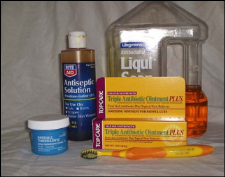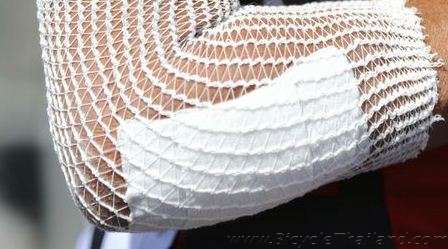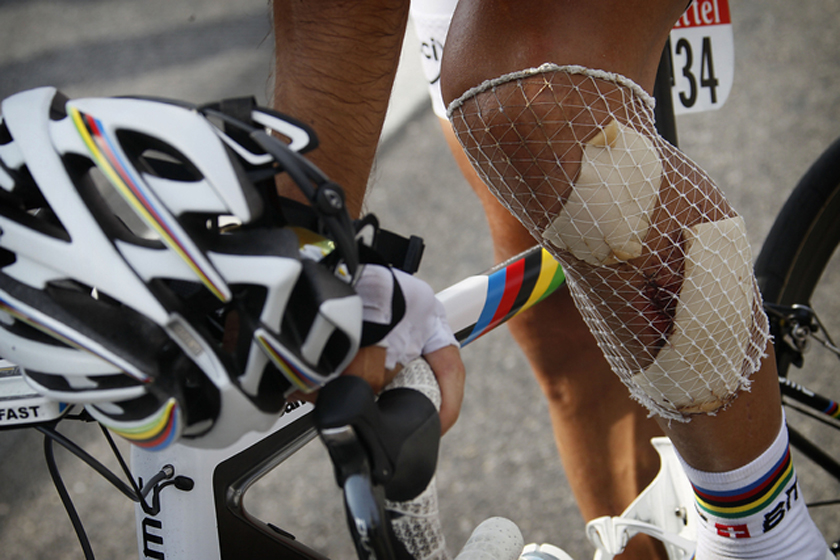
These are more effective than popular onion-extract-based products like Mederma. “Silicone sheets are very effective in treating scars, providing an optimal dressing for helping scars heal,” says Karp. All our experts recommend using silicone-based patches (called sheeting) or gels (more on those to come) to treat scars in the early stages of formation. The ideal time to start treating the scar is a week or two after an injury or a surgical incision. Rachel Nazarian, a dermatologist at Schweiger Dermatology Group, for its infection prevention and protection that stimulates the healing of wounds. “Proper wound dressing can help in this regard.” Aquaphor is also a favorite of Dr. Jennifer Chwalek, who practices with Union Square Laser Dermatology, says that “you want to keep the wound hydrated with something like Aquaphor, as this promotes faster healing.” It’s a myth that you want to air out the wound and let it dry, because that will form a scab, which can cause more scarring and take longer to heal. (Polysporin contains bacitracin zinc in addition to a second antibiotic, polymyxin B, though you can get ointments that contain just bacitracin.) After you’ve treated the wound with antibiotics, Dr. “This may necessitate the use of a topical antibiotic like bacitracin ointment, which is especially important if the wound occurred with concomitant contamination” - for example, a road-rash injury from skateboarding. “Don’t let the wound get infected,” cautions Dr. The first line of defense is to keep the wound clean, moist, and covered in the early hours, days, and weeks - before you even start using a scar treatment. Because there is no all-in-one, holy-grail scar treatment, we’ve instead organized their recommendations into an easy to follow step-by-step guide to treating scars.
Best treatment for road rash plus#
To help, we talked to dermatologists about the most effective over-the-counter products for getting rid of scars, plus what to use to prevent a scar from forming in the first place.
Best treatment for road rash skin#
The process uses “fine needles to mechanically disrupt the skin and cause a controlled wound, which then sets about repair mechanisms in your skin to build more collagen and elastic tissue.” That doesn’t mean there aren’t ways to help heal scars at home.“The goal is to treat wounds early and well to prevent the formation of a hypertrophic scar, which is a raised scar that stays within the confines of the wound,” explains dermatologist Anita Cela, who specializes in cosmetic dermatology.

More recently, microneedling has been a popular in-office treatment for scarring, especially ones caused by acne, according to Fishman. “Lasers can target pigment in the scar or help remodel the collagen to heal the scar texture,” board-certified dermatologist Dr. “This maximizes the chance for a less noticeable scar,” Levine says, while scars from injuries tend to be less predictable.Įxperts agree that in-office laser treatments are the most effective way to improve the appearance of scars. Surgery scars tend to be linear because they form from wounds that are created in a controlled setting. But here, we’re focusing on helping you treat scars that form after a surgery or significant injury, typically on the body. We tend to pay particular attention to scarring on our faces, like the average acne scar or hyperpigmentation. Levine, the director of dermatology at Plastic Surgery & Dermatology of NYC.

Unfortunately, scars do sometimes end up being a cosmetic concern, according to Dr. Scarring is normal, necessary, and the consequence of “inflammatory cells coming in to stop bleeding, prevent infection, and lay down new collagen to ‘close’ the wound,” explains Cybele Fishman, a board-certified dermatologist and assistant clinical professor of dermatology at Mount Sinai Hospital. And as much as they have a bad reputation, they’re part of the body’s healing process.

Scars come in all sorts of shapes and sizes.

Photo-Illustration: Courtesy Fox Searchlight Pictures


 0 kommentar(er)
0 kommentar(er)
